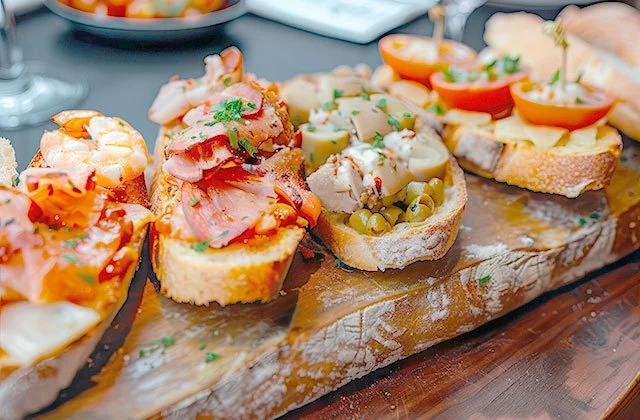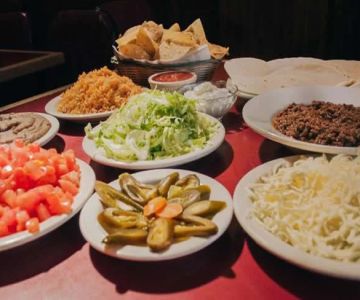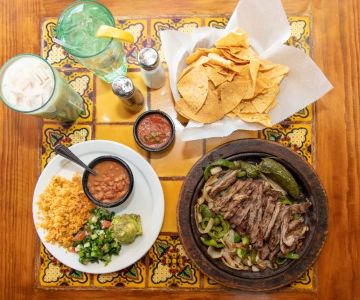
Discovering the History of Spanish Tapas and How They Evolved
- 1- The Origin of Tapas
- 2- How Tapas Evolved Over Time
- 3- Popular Types of Tapas
- 4- Tapas in Modern Times
- 5- Real-Life Examples of Tapas in Spain
Spanish tapas are an integral part of Spain’s culinary tradition, known for their small, flavorful dishes often shared with friends or family. Tapas have a fascinating history and have evolved into an iconic food culture. In this guide, we will explore the origins of tapas, their evolution, and their place in modern-day dining. If you're a fan of Spanish cuisine, read on to learn more about the history of tapas and how you can enjoy them!
1- The Origin of Tapas
The word "tapas" comes from the Spanish verb "tapar," meaning "to cover." There are various stories about how tapas originated, but one of the most popular explanations involves the practice of covering drinks with small pieces of food. In the early days, Spanish bartenders would place a slice of bread, cheese, or meats over the top of a glass of wine or sherry to keep flies away. Over time, these small snacks became more elaborate and were enjoyed alongside the drink itself.
2- How Tapas Evolved Over Time
Initially, tapas were simple foods used to cover drinks. However, as Spanish cuisine grew in popularity, so did tapas. By the 19th century, tapas had transformed into an entire culinary tradition in Spain. Regional variations emerged, with each area of Spain offering unique flavors and ingredients. Tapas began to be served as small plates in bars and restaurants, creating the social dining experience we know today. In modern times, tapas have become an integral part of Spanish gastronomy and are enjoyed all over the world.
3- Popular Types of Tapas
Tapas come in a variety of forms, ranging from cold dishes to hot, cooked options. Here are some popular types of tapas you might find in Spain:
- Patatas Bravas: Fried potatoes served with a spicy tomato sauce.
- Jamón Ibérico: A type of cured ham that is a staple in Spanish tapas.
- Gambas al Ajillo: Shrimp sautéed in garlic and olive oil, often served with a dash of chili.
- Calamares a la Romana: Fried squid rings, typically served with a side of lemon.
- Pan con Tomate: Toasted bread rubbed with ripe tomatoes, garlic, and drizzled with olive oil.
4- Tapas in Modern Times
Today, tapas have evolved far beyond the traditional Spanish bars. Tapas-style dining is now a global phenomenon, with restaurants around the world serving these small plates as part of the casual dining experience. Many chefs put their own creative spin on traditional tapas, incorporating international flavors and modern techniques. Whether you’re enjoying tapas in a cozy bar in Barcelona or a trendy restaurant in New York, tapas remain a beloved culinary tradition.
5- Real-Life Examples of Tapas in Spain
Tapas are an essential part of daily life in Spain. Here are some real-life examples of how tapas are enjoyed in various parts of Spain:
Example 1: In Seville, tapas are often served during the afternoon as part of a "tapeo" or tapas crawl. Locals hop from bar to bar, trying a small dish at each stop. Popular choices include croquettes and montaditos (small sandwiches).
Example 2: In Barcelona, tapas are frequently enjoyed during the city's lively evening hours. A popular dish here is "escalivada," a smoky roasted vegetable salad often served with anchovies or tuna.
Tapas are not only a type of food, but also a social experience, fostering connections between people. Whether you're dining with family or friends, tapas are a great way to sample a variety of flavors in one meal.
Conclusion
Spanish tapas have a rich history, and understanding their evolution gives us insight into Spain's cultural and culinary traditions. From humble beginnings to their status as a global food trend, tapas have remained a symbol of Spain's rich heritage. If you’re interested in learning more about the best tapas experiences, visit Rubi Spanish Table for recommended tapas products and services.









 Tomiño Taberna Gallega4.0 (2164 reviews)
Tomiño Taberna Gallega4.0 (2164 reviews) Delia Restaurant Inc4.0 (38 reviews)
Delia Restaurant Inc4.0 (38 reviews) Gypsy Kitchen DC4.0 (1780 reviews)
Gypsy Kitchen DC4.0 (1780 reviews) The Coolmena Birria Food truck5.0 (11 reviews)
The Coolmena Birria Food truck5.0 (11 reviews) La Vieja Castilla4.0 (469 reviews)
La Vieja Castilla4.0 (469 reviews) Latino's Kitchen4.0 (662 reviews)
Latino's Kitchen4.0 (662 reviews) How to Make Spanish Tarta de Limón con Frambuesas y Merengue Casero
How to Make Spanish Tarta de Limón con Frambuesas y Merengue Casero The Best Spanish Restaurants in Raleigh for Traditional Dishes and Tapas
The Best Spanish Restaurants in Raleigh for Traditional Dishes and Tapas How to Make Spanish Fabada Asturiana – A Hearty Bean Stew
How to Make Spanish Fabada Asturiana – A Hearty Bean Stew The Best Spanish Restaurants in Columbus for Authentic Spanish Cuisine
The Best Spanish Restaurants in Columbus for Authentic Spanish Cuisine How to Make Spanish Piquillos Rellenos: Stuffed Peppers Recipe
How to Make Spanish Piquillos Rellenos: Stuffed Peppers Recipe How to Make Spanish Chistorra a la Miel: Chistorra with Honey Recipe
How to Make Spanish Chistorra a la Miel: Chistorra with Honey Recipe